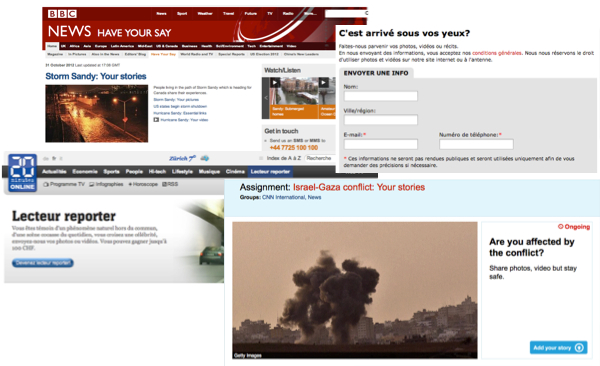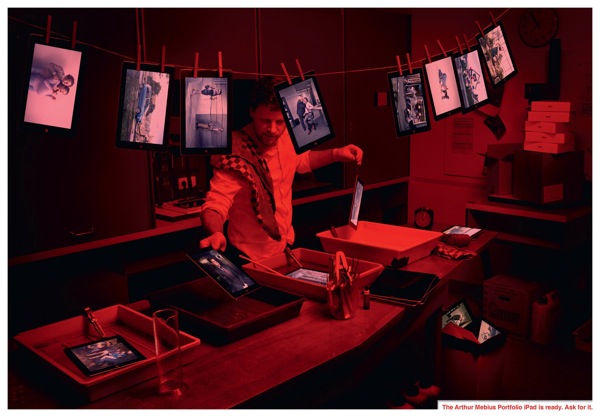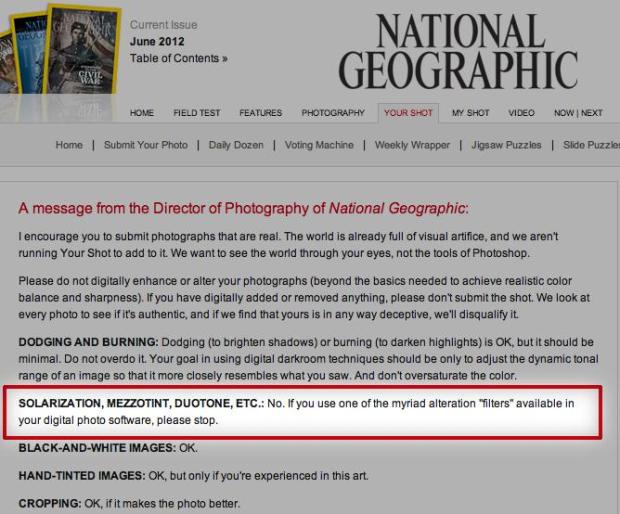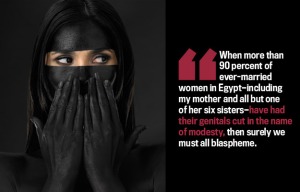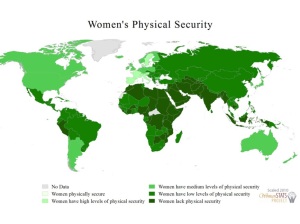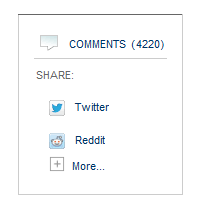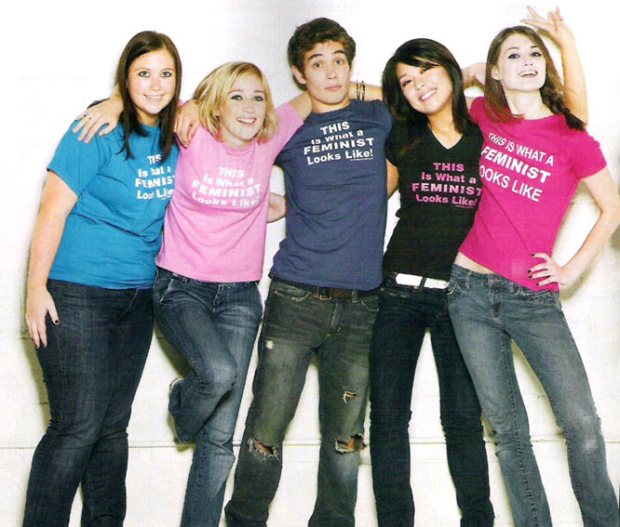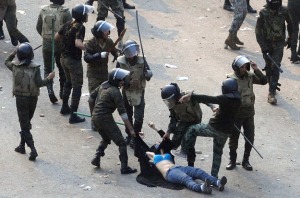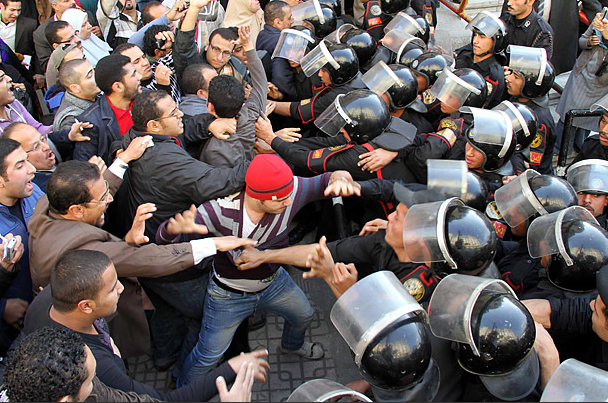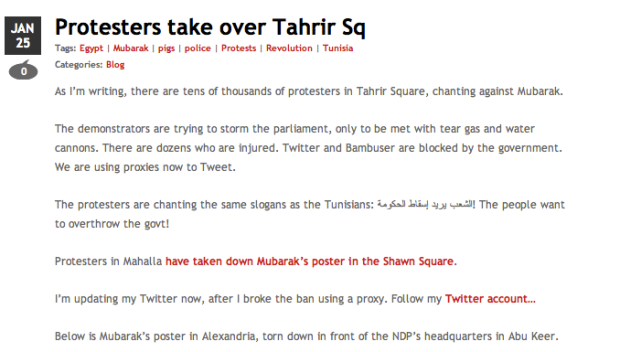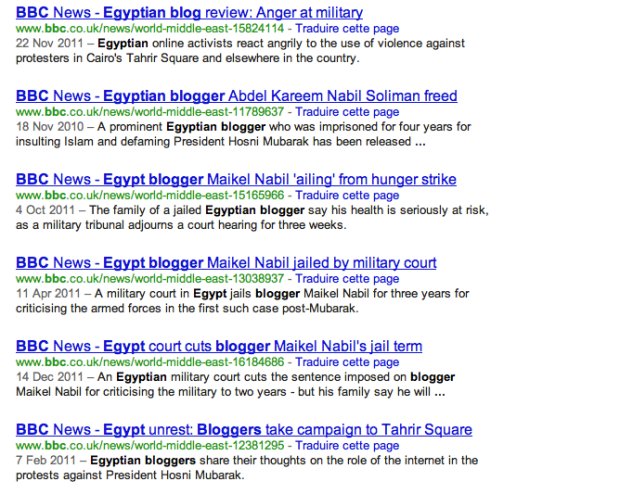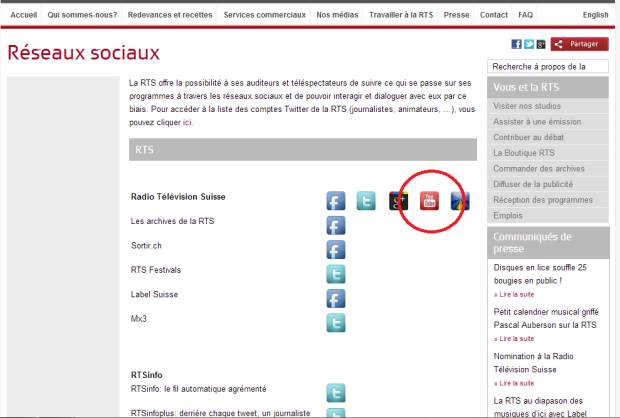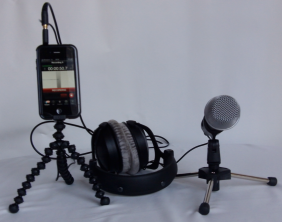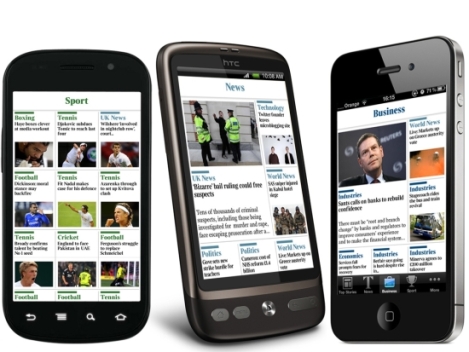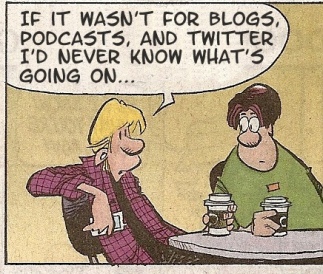Posts Tagged citizen journalism
Can anybody be a journalist?
Posted by romainbardet in Uncategorized on November 27, 2012
Who can be called a journalist? The answer isn’t so easy, but so important in a world where everything goes so fast and information has a great impact on human activities.
Today, almost anybody in the world has a smartphone and an access to the web. Anybody can post a picture, a text or a video and give a sort of information to the world. How? With the new media: Blogs, Facebook, Twitter, Wikipedia or YouTube. Information is so easy and so quickly widespread trough the planet. “Great evolution”, will say the ones. “Disinformation” will respond the others.
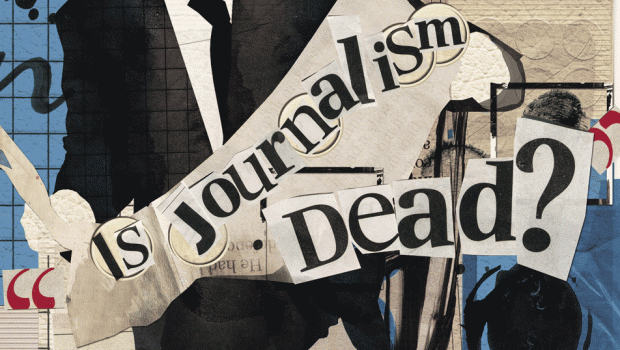
Will the professional journalists disappear?
Picture: macalester.edu
The raise of citizen journalism: the new world’s voice
People don’t want to stay silent. For many centuries, journalists have been people’s voices. They found, collected and verified the information and always searched for the truth. But with the Internet’s democratization, people don’t want to wait that the journalists let them speak. They prefer to raise their voice directly and explain or show something to the whole world.
With the advent of Internet 2.0, new media technologies, for example social networking and media-sharing websites, gave citizens the opportunity to give information. Those citizen journalists often report breaking news faster than “normal” journalists. We can cite the events of Arab Spring, which were a lot report by anonymous citizens in the heart of the revolution. Another example of this quick report and exchange of information is the “Occupy Wall Street” movement which debuted on September 17th 2011.

Syrian activists send information with their computer.
Picture: bbc.co.uk
A really actual example is Syrian crisis. The country is closed and inhospitable for the journalists. But Syrian people who live the war post videos and testimonies on YouTube, social media or blogs. They claim their story and give a reality that many journalists just can’t report. It benefits to the citizens in the world, to realize what’s happening there!
Chris Shaw, the editorial director of ITN, a Britannic production society, said to The Guardian that social networks were opening up “whole new vistas for documentary filmmakers. You can make the most amazing films using content from social networks, sometimes with the permission and sometimes without the permission of the people who shot them.”
This reality takes all its sense with the Syrian crisis. “There are places like Syria where journalists haven’t been able to go and […] there is an extraordinary resource on social networks for current affairs, even though we have to take extraordinary caution to verify what we use”, said Chris Shaw.
Let’s see a short funny video, but with interesting points of reflection. “No no, I’m the journalist!”:
Let people participate
What we can observe today, is that many classical media websites give people the possibility to react and deepen the information. You can let comments in the website’s blog for example. Professional journalists are not alone anymore, because readers give a feedback and let them know what they think about the article and more globally about the topic.
Other media are based on the concept that citizens can contribute to the news by giving information or sharing links, but with the control and the work of professional journalists behind. This is the case of Digital Journal or Rue89 in France for example. But is it citizen journalism? I don’t think so. We can call this hybrid journalism, because citizens and professional journalists work together.
 But some websites or blogs are entirely “citizen made”. You, I, anybody can add an article and participate to information’s transmission. But these platforms ask the contributors to share valuable and verified information, and grant themselves the right to remove an inappropriate content. For example, we can mention the Quebec’s website centpapiers or the better known Wikinews.
But some websites or blogs are entirely “citizen made”. You, I, anybody can add an article and participate to information’s transmission. But these platforms ask the contributors to share valuable and verified information, and grant themselves the right to remove an inappropriate content. For example, we can mention the Quebec’s website centpapiers or the better known Wikinews.
American information’s channel CNN launched in 2008 its new participative site: CNN iReport. This website is only based on citizens content. They can post a story, picture, commentary or video and create the news. What is interesting with this concept is that CNN’s journalists sometimes select a subject and diffuse it on the classic channels. With this system, citizens can really be a part of the media agenda setting.
Citizens, yes! Citizen journalists, no!
So where is the difference between a citizen and a professional journalist? Well, let’s go back to the very base of journalism: giving information. Information isn’t just a concept; it’s the reality, the truth, what’s really happening. Yes, journalism is “making information” and transmitting this information to the people; a full-time job!
Here are some answer people gave to the question “Who should be called a journalist?” on ijnet (international journalist’s network):

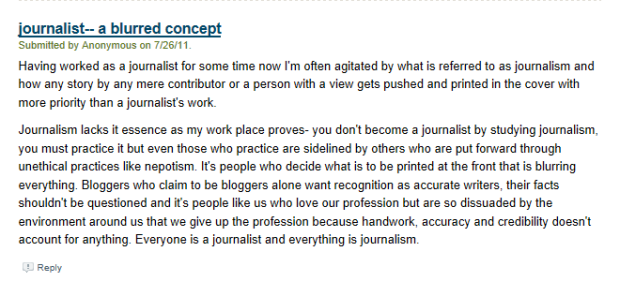

If we set aside the fact that professional journalists work for a media and are paid for this, we must consider that journalists respond to some exigencies and rules. They have to verify the sources, analyze them, explain the events, replace them in their context and be as objective as possible. And the journalists must respect deontological rules. Do the citizen journalists respect those exigencies? Because they must, instead we just can’t call them journalists.
Another point is that a professional journalist isn’t in the commentary when he writes an article. When a citizen journalist writes, we often observe committed comments. Professional journalist informs, when online citizen testifies to what he sees, ears or notices.
But today, citizens contribution is a wealth for journalists. An inexhaustible source of ideas and materials than can be used. And it forces journalists to do their job: treat information and not only transmit it as it is. Citizens make their citizen’s job, when they transmit something important and newsworthy to the journalists.
You’re a citizen, a journalist, or maybe a citizen journalist: what do you think? Leave you comments!
Crowdsourcing: how is this concept applied to journalism?
Posted by celinebilardo in Technology on November 27, 2012
With the rise of the Web 2.0, more and more people get to express themselves on the Internet: by contributing to a personal blog, answering to a poll on a website or making comments on any event the web is talking about. Today, those contributions can be neatly managed by news organisations to make you participate to their news production. And this is the object of this blog’s entry: crowdsourcing the news.
The crowd likes to be involved
Jeff Howe is the man who coined the term “crowdsourcing” in 2006 in an article called “The Rise of crowdsourcing.” At the time he was a contributing editor of the Wired magazine. Now he tends to be perceived as The Crowdsourcing expert. But you may wonder…
What is crowdsourcing?
As Jeff Howe well expressed it, crowdsourcing is a process of involving the public, the crowd, into a task by an open call. And this process if often made through a website. The definition could include many sorts of calls, indeed. To a large extent, crowdsourcing can be applied to solving a scientific problem, as the company InnoCentive started to do in 2001, or as IStockphotos managed in outsourcing the task of photographing an event to a voluntary crowd instead of hiring a professional photographer for instance.
Crowdsourcing takes many forms. But one thing makes it unique: it empowers the crowd. As the crowd represents different brains, different competences, it can be even more creative, efficient, innovative and influent than a single man working in his office on a task he has no grasp into.
How news organisations make the most of it?
In the context of Journalism, you can well imagine that the journalist and the news organisation one can work for were primarily the only gatekeepers of news, and you were waiting for them to be informed. If there was a place for you to communicate with the newspaper, there was the “letters to the editor”, and not many more.
Today news organisations have their websites. Moreover, if you give a closer look to them, you will notice they even make a space for you to act and communicate. Not by solely adding comments. There is more!
In England, the BBC has launched Have your Say ; in the USA, CNN opened iReport. And the Swiss news organisations are not the last: The RTS has Vos infos and The 20minutes has the Lecteur-Reporter’s platform. All fell in the new trend. They all let you the chance to be part of their work, or in other words: now the news need you.
As a million of events happen across the world, reporters and journalists cannot cover them all. This is where the audience is powerful: it can improve their coverage.
When terrorists set off a series of bombs on buses and subways in London, who produced the most riveting images and sound bites? The passengers and their cell phones.” [1] When an accident occur next to your home, or on your way to work, you are the first witness of the event and no professional reporter could catch the same tension you were able to grasp when it happens.
With a single photo, a video, a short message, you can make a newsroom get up. You can even make it change its editorial agenda.
For Bernard Rappaz, Editor in chief at the RTS in Switzerland, crowdsourcing makes a news media quicker than before. Using Twitter, Facebook, and their crowdsourcing tool on their website, the members of the newsroom can compete with the news agencies they are sometimes dependent on. As Mathieu Coutaz confirms himself: it allows the staff to be the first on the scene and to be always closer to the stories that interest the people their work for.
Mathieu Coutaz is the content manager for 20minutes online in the French-speaking part of Switzerland. The 20minutes is The daily newspaper distributed in Switzerland and this, for free. Its platform “lecteur-reporteur” has been launched in 2006 and the newspaper rewards any contributions that it eventually publishes on its web. What is most, “50% to 70% of the contributions that are selected go on the print edition” Mathieu Coutaz explains. And he emphasises one fundamental point that cannot be neglected: your photos and stories go through a process of verification before getting anything done. “When verified, the contributions of the audience can influence the editorial agenda on the temporal and hierarchical aspects. If it has to be treated before another news, and if the story is worth being published at the top of our agenda, then of course we do it.”
For the one that may want to ask: But isn’t it citizen journalism? In fact, no it isn’t. Robert Niles states this argument in his “Journalist’s guide to crowdsourcing”:
Crowdsourcing does not ask readers to become anything more than what they’ve always been: eyewitness to their daily lives.
In that sense the news organisations save their first role of gatekeepers: the readers don’t write the stories, they only contribute to it: the final decision of its treatement and broadcast still lies in the professional’s hands.
Crowdsourcing at risks
In an interesting article, Darren Gilbert warns that “crowdsourcing can be as advantageous as it can be dangerous.” Although readers are willing to contribute to the news, some are able to get a journalist on the wrong track. He takes the example of a recent scandal that occurred in the United States: a company named Journatic published news gathered from the public. And there were actually wrong!
In Switzerland, all the news platforms I discovered ask for the name and mail address of the contributors, in order to be able to get back to him/her. A mail address can be fake, indeed, but in any case, Swiss news organsations do the verification before publishing, which can avoid some serious faux pas.
To cope it all, crowdsourcing may well bring the public and the news organisation closer than before. It may establish a new relationship between the public and the news media: a trust that could have been lost. But it still needs to be well used in order not to lose what crowdsourcing is for journalism: a relevant tool to make the crowd part of the work, for a better and substantial result.
I am now turning to you
Have you ever contributed to the news of your local newspaper?
What do you think of the crowdsourcing concept regarding journalism?
And to go further…
A new trend in crowdsourcing is for journalists to use special crowdsourcing platforms to gather the information they couldn’t find from their places, such as Ushahidi‘s platform, specialised in mapping crowdsourcing information.
The TED talks also got into the crowdsourcing concept, here is a talk held by Paul Lewis about the impact of crowdsourcing the news for investigative journalism.
And to be always up to date with the last seminars about crowdsourcing and journalism, have a look at the European Journalism Center’s website, it’s worth it!
By Céline Bilardo
[1] Howe, J. 2008. Crowdsourcing: Why the power of the crowd is driving the future of business. 1st ed. USA: Ed.Crown Business. p.212.
Instagram: a teen-toy or the new reporter tool?
Posted by leagloor in Technology on November 26, 2012
“Instagram photos cheat the viewer!” Nick Stern’s claim, published in February 2012 on cnn.com, came as a bombshell, engendering pros and cons-reactions in the journalism and photo-reporting world. Who’s right? Let’s have a look!
With more than 30 millions of users and about 150 photographs posted (see article on Wikipedia), the photo-editing and social-networking app Instagram can be described as one of the most successful Smartphone tools. Among its users; teenagers, adults, singers, actors, politicians and, of course, journalists!
Yet the journalistic use of Instagram in a professional perspective has created a huge debate on the web since last February. The vexed question: can journalists and photojournalists honestly use Instagram as a professional tool, to cover a war or a political meeting, or has it to remain a “toy” only good to post pictures of your breakfast or your new nail-art?
 |
Cheating with reality?
For some photographers no hesitation, Instagram has nothing to do with information and journalism. Here are some of their main arguments. But before, here you go with a video that shows you how Instagram works and what are its main features:
Filters and fake emotions
Photographs bring emotion, related to the subject, to the viewer’s history but also thanks to the way the picture is taken. Regarding this, the anti-Instagramers are clear: Instagram kills the authenticity, creativity and originality of your pictures.
For Nick Stern (see the complete article here and his website here), American news photographer and first anti-Instagram pamphleteer, the pictures taken with the app do not communicate real emotions, conveyed by the photographer, as it should. “It’s the work of an app designer in Palo Alto who decided that a nice shallow focus and dark faded border would bring out the best in the image”, he claims, “The image never existed in any other place than the eye of the app developer”.
“The greatest photographs are created in the mind of the photographer and not in the workings of the camera.” Nick Stern
Moreover, with 14 different filters, the variety of pictures is indeed quite large however rather limited. According to its accusers, Instagram creates therefore photographic standards, which enchain the users, kill their creativity and prevent them from expressing their emotions.
But was it not already the case with silver films? Indeed, during the development process, the photographer could use different chemical techniques such as cross-processing and could therefore add something external to the picture.
Aesthetics against information duty
Showing reality objectively is one of the main goals of any journalists. For the anti-Instagramers, using an app that adds effects on a picture in order to make it look fancier or nicer does not fit the profession ethics. That is why Nick Stern says that “Every time a news organization uses a Hipstamatic or Instagram-style picture in a news report, they are cheating us all”.
However aesthetics is a part of photography anyway such as subjectivity. Photographers are dealing with image and cannot completely distance themselves from the visual dimension of their job.
As Joerg Colberg, an American photographer says “We all know that all photography is fiction: as a photographer you make choices, which influence the photograph enough for it to be more of a fiction than a fact. […] But the photojournalist’s task, no actually the photojournalist’s duty is to minimize the amount of fiction that enters her/his photography. […] The problem with InstaHip in this particular context is it adds a huge amount of fiction to photography, simply by its aesthetic” (see the complete article here).
News Trivialisation
Another problem raised by the accusers is that the majority of the Instagram pictures deal with the users’ every day life: meals, hobbies, fashion, cosmetics, friends, family and pets. Mixing serious news pictures with these trivial subjects minimizes their value and their informational impact.
“Since in the dominant context, people’s social lives, InstaHip photographs are usually not seen as particularly relevant, once you use InstaHip as a photojournalist you’re applying that same kind of thinking to your images. You’re trivializing your message.” Joerg Colberg
Why so unserious?
Maybe the solution would be to create a parallel network, which would share the same technical features and would be exclusively destined to news companies, a kind of Infostagram! But we will come back to that later.
The Like button tyranny
As other social networks, Instagram allows the users to share their pictures on other social medias such as Facebook and Twitter and proposes a comment option and a Like button.
American panelists wondered to which extent “Instagram’s Like button, combined with the image filters, has turned the service into performance art, with people trying to rack up Likes for the most aesthetically striking images” explains Steve Myers in his article on Instagram (see the complete article here). A sort of photographic social desirability!
As we will see later, these social network features can also be positive for journalists. In the mean time, to read more about the Like-culture problematic, click here.
Vintage overdose
You can see it in fashion: vintage is trendy! And photography is no exception to the rule. Instagram, with its Instamatic and Polaroid-inspired effect perfectly incarnates this trend (see this article here). But as Jean Cocteau said “Fashion is what goes out of fashion.” Thus, the risk that Instagram becomes outmoded is real.
What risk for journalism then? Since Instagram becomes has-been, the information broadcasted on it will not be seen as relevant by its users or its ex-users. The value of information will be at stake.
Moreover, is not information supposed to be related to the here and now, to the burning issues and not focused on the past?
 Instamatic Kodak 100, 1963 |
 Polaroid One Step, ’80 |
Connecting people?
Does Instagram look like the Devil to you now? Fortunately some positive and helpful aspects can also be highlighted, all related to the social dimension of the app.
Information network
As already said, Instagram is not only a photo-editing app, it also allows the user to create an extended network, to follow people and to get followers. Videos on Youtube actually show you how to be followed by the maximum of users. Do you remember what we have said about the Like button tyranny?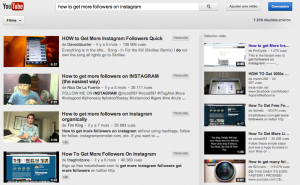
More seriously Instagram can become a real information feed, through the channels of news companies or through the topics dealt with on the official blog of the app (see here). However, at the moment, the media channels remain extremely poor and unfed. The only one which seems active is the CNN’s, perhaps because of its US origin and destination. Here are some examples taken from Webstagram, the Internet viewer of the app.
One of the rare successful examples of use is the covering of the New York Fashion Week 2012 by the New York Times. The journalists present on the site provided 450 pictures through the account created for this occasion, visible here. With 156’319 followers, the operation was a real success.
 |
 |
Another example: the National Geographic launched a blog fed with climbers’ Instagram pictures called “Field test – On Everest”. The Instagram feed of the magazine, visible here, is also well provided with pictures.
However the company seems less tolerant regarding the pictures sent by its readers. In a message on the company website, the photography director encouraged the National Geogrpahic readers to avoid sending them modified pictures:
This desire of authenticity and objectivity matches the cons arguments presented previously regarding Instagram.
The non-professional Keystone
If the National Geographic had a really ethical reaction regarding photography, this is not the case for some other medias. Indeed Instagram can be used as a kind of a non-professional Keystone.
Let’s think about several showbiz articles written by the 20minutes about Rihanna’s tattoo or Kim Kardashian’s look. The information comes directly from what the celebrities post on Instagram as a primary source. Even if we are talking about famous people, this is what we call crowdsourcing or UGC (User Generated Content).
In a more serious perspective, a new app has been developed, called “Signal”, a mix between Instagram and Foursquare. With this app, you can post pictures and geolocalize them.
Normal citizens and journalists will thus be able to get informed of the events happening in their country or their area. What happened with Twitter during the Arab Spring could also happen thanks to photographs (see complete article here).
Democratisation of photography
One of the main arguments against Nick Stern’s article was that his vision of photography was elitist. Let’s think about Mathew Ingram’s article (available here) who vividly criticizes this vision.
Likewise, the photographer and photography teacher Richard Koci Hernandez praises the new possibilities of interacting with the audience offered by Instagram: “More people are now being exposed to my journalism than ever before […] Now I have access to literally the entire world.” (see complete article here).
Thus, for Instagram-defenders, using this app is also a way to have access to a form of art production, which was by now saved for professionals and artists. But can we honestly put on the same level the technique required by an SLR camera manipulation and the use of a mobile phone?
A matter of perspective
As we have seen, no categorical answer to the Instagram problematic can be given. Asking what a relevant photograph or a worthy photographer should be requires also to ask what photography is. A hobby? A job? An art? The three of them? Maybe the answer lies in the context or the personal perspective in which the picture is taken.
Let’s think about Benjamin Lowy’s work in Afghanistan. He used Instagram but did not betray what the journalist Alex Garcia calls “the vision and mission of photojournalism – [he is] applying a creative aesthetic that adds meaning or accessibility to [his] images” (see complete article here).
Anyway we should not forget that, Instagram or not, photography is always a matter of choice. By then, watch the birdie!
By Lea Gloor
Internet : A voice to feminist journalists
Posted by fsator in Uncategorized on November 26, 2012
Internet definitely changed feminism. You don’t need to be Simone de Beauvoir or some kind of Jeanne d’Arc to be a feminist writer.
If before women were struggling to defend their rights, today the situation is completely different. It is way simpler to sit behind our screen to write and post our opinion on gender inequality.
February 1971; Swiss women have the right to vote. Thanks to hundreds of women who fought for it finally a women has a voice. But that doesn’t mean inequality collapsed. Not at all. Women continued to fight for a lot of other things (abortion for example) in very different ways (riots, books, add…). Until internet appeared… Feminist had a new wide range of communication. Thankfully internet is a good guy, it doesn’t make any distinction. Let’s face it ; internet opened new doors for us. I thought it would be interesting to see those new communication tools, internet offered to feminist. What would feminism have looked like without internet? Surely not like this…
 Websites as a voice for feminism:
Websites as a voice for feminism:
Feminism is not about shouting “men are jerks, women are better”.
Mona Eltahawy, a feminist journalist, fears an autumn for women after the Arab Spring. She uses internet to post article on a foreign policy website to reveal the conditions of women in the Arab world. All right we already knew that women weren’t treated like this:
In her article “why do they hate us”, Mona Eltahawy denounces
“Until the rage shifts from the oppressors in our presidential palaces to the oppressors on our streets and in our homes, our revolution has not even begun”
No doubt that without internet her article would never have been published in an Arab country.
I can’t imagine this picture in the Egyptian libraries or walls:
On the same website we can also look at a map where we can discover the countries where it is less secure to be a women:
If it wasn’t on internet, this map wouldn’t have been published in a book or maybe in some of them. But as we can see there are no countries where women are considered physically secured.
But Mona Elhatawy article and those maps brought many feedbacks on social networks. As we can see here is how the articles have been commented:
A very encouraging result…
Blogs: Another voice to feminism
All right, you don’t work for a huge online newspaper. That is fine; internet permits you to have a…blog!
And there are so many blogs, so many feminist writing about their experiences or expressing their opinion that making a selection was really hard.
But I managed to rank those blogs by preference:
– Feministing:  Yes feminist but also actual! It is like reading your newspaper in a feminine version. For example on the 14th of November, America is talking about the “women triangle” that shook the CIA. Well feministing is going to give you the other version “a CIA director who cheated on his wife”. And not the other version, “the women who disturbed CIA”
Yes feminist but also actual! It is like reading your newspaper in a feminine version. For example on the 14th of November, America is talking about the “women triangle” that shook the CIA. Well feministing is going to give you the other version “a CIA director who cheated on his wife”. And not the other version, “the women who disturbed CIA”
Yes Feministing is definitely a blog to read in the morning while taking your breakfast.
– Echnide of the snake: what a weird name for a blog. The blogger started it in 2003 and it mainly reflects what happen every day in the women world. For example we discover an article about an Irish woman who died after being denied abortion.
– Viedemeuf:  “chick life” in English, is a blog written by every woman who witnessed a sexist event or something that surprised her in her life. Owned by the group “osez le feminsime” it gives the opportunity to citizens to rule the blog. For example Helen, a blogger, says:
“chick life” in English, is a blog written by every woman who witnessed a sexist event or something that surprised her in her life. Owned by the group “osez le feminsime” it gives the opportunity to citizens to rule the blog. For example Helen, a blogger, says:
Today in Walt Disney’s bathroom I saw a man cleaning his baby; why are they baby equipment only in women’s bathroom?
This was just an extract among every other blogs you can find. Feminist journalism exists, but also anti-feminism journalism. But I am not going to give you any links…I am not going to do any advertisement for the enemy!
Videos : 3 minutes to say “yes to feminism”.
The good thing about a video it is that you can hear people talking, see them acting and get the message easily.
It might be easier to be funny through a video than a text… Not for everybody of course but a group of young people succeed at being very funny through their videos.
It came from a simple idea: what if we exchanged our roles? Let’s put a woman in the shoes of a man for 2 minutes, make her act like a man and see what it looks like. Well the result is pretty hilarious. Judge by yourself:
“Osez le feminism”, in English “dare feminism” are hundreds of feminist militants who come together to fight for women rights. Videos are just a small part of their work; they have a serious website, with serious event and serious people.
Pictures: A simple and quick voice to feminism
Ever wondered what a feminist looked like?
Or
I bet you want to have the same! Here is a website where you can buy it: The feminist T-shirt
Let’s take a look at another kind of pictures:
Some of them are worth a thousand words.
Sixteen women of Professor Rachel Seidman’s Women in the Public Sphere course at Duke University decided to put words and pictures together. On their blog Who needs feminism.
They post pictures of people from all over the world who explains why they need feminism for.
Children, man, woman, from all generations come all together to say why feminism is important.
Here are some pictures:
Social networking: the newest voice to feminism
Twitter, facebook ect… who didn’t hear about it? If you are not on twitter or facebook that is fine, but if you don’t know what the hell we are talking about, I am going to ask you “how are you reading this from Mars?!”.
And those tools are definitely excellent tools to spread a message.
The facebook group “Feminism” and”feminist frequency” organizes events, and tells us all about feminism and women in the world. “Liking” one of these pages allows all your facebook friends to know that you are feminist or like what the group does.
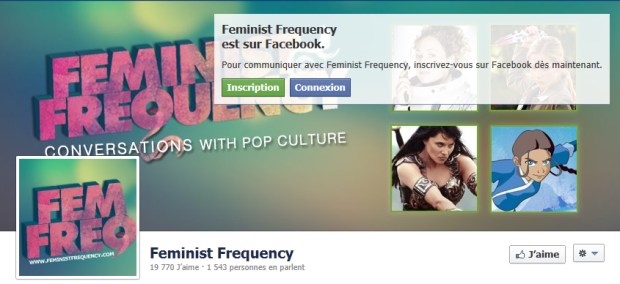 And we have feminist twists that we can follow! “Feminist” hulk is an amazing feminist twitter profile that I love to follow because it is hard not to laught!
And we have feminist twists that we can follow! “Feminist” hulk is an amazing feminist twitter profile that I love to follow because it is hard not to laught!
Thanks to twitter feminism is now following you!
*We need feminism to do our duty as women, mothers, employees or simply for not being judged…we don’t need to be perfect (translation of the twitt)
If after all this you think that they are not enough messages and expression for feminism, I don’t know what to add to convince you. We can’t deny that internet changed the way we live. Everyone has a voice. The only thing you need is a computer and the wifi.
Dear internet, Mozilla, google, facebook, twitter ect… thank you for being awesome feminist friends!
How citizen journalism landscaped the Egyptian Uprising
Posted by sarabandelier in Uncategorized on November 25, 2012
Ever heard of Wael Ghonim, Ramy Raoof, Alaa Abdel Fattah, Manal Hassan, Mahmoud Salem or Hossam El-Hamalawy? Those are just a few names amongst many bloggers, cyberactivists and citizen journalists who shaped the Egyptian Revolution and traditional media landscape. The world made them famous during and after the 18 days of the Egyptian Uprising. This article will give you a glimpse at the role these citizen journalists played during the Revolution, but also in Egypt in general. Sara Bandelier
If you want to free a society just give them Internet access – Wael Ghonim
Since the 1950s, Egypt’s state media has been owned and controlled by those who govern. From Nasser to Mubarak, national media had only covered stories they were told to cover and showed a unique perspective promoting the presidential regime. Traditional media then meant propaganda.
The Internet wasn’t slow in sweeping the dusty media landscape in Egypt. On the contrary, Egyptian citizen journalists were training and learning from those new technological tools long before the 2011 Revolution.
The Kefaya movement in 2004, the April 6th movement in 2008 and the October 9th Maspero protest in 2011 shaped the way Egyptian citizen journalism would have an impact on a national and international scene. From learning how to use ghost servers to street reporting, Egyptian activists were ready to attract the attention of millions of people and challenge the regime.
It’s the new media, the people’s media, that exposes the truth – Hany Shukrallah, editor of Ahram Online
The Egyptian cyberactivists and citizen journalists took upon themselves to show the world the true face of Egypt’s political and military regime. A face that violently silences the voices of those who seek change, who question Egypt’s regime and who fight for their rights (see We are all Khaled Said Facebook page).
Facebook gave them the possibility to organize street protests and connect people with similar opinions, Youtube promoted video footage filmed by citizen journalists. These videos were then relayed by traditional medias. Twitter helped coordinate protests and reach international media by recording the activities and events during the uprising.
There is a burgeoning movement for press freedom in Egypt – Sharif Abdel Kouddous
On the one hand, there was controlled state-media. On the other, the openness of Internet. With those two components, citizen journalism could only play a big role in such a Revolution. Not only for nagging the authority, attracting the attention of international media, or Egyptians. Citizen journalism had a role to play given the challenges professional journalists had to face when trying to do their work.
You might ask yourselves, as I did, how can a citizen journalist outrun a professional journalist?
You’re in an angry street filled with protestors who do not have a very good opinion of traditional media. A square where the police and military are watching all of your moves and ready to attack you. You are there, with your camera, a microphone and all those other little things journalists need, trying to interview people and film the event… not very discreet!
Laurent Burkhalter, a Swiss TV journalist, recounts how a mob turned against his camera man and himself in the Choubra district of Cairo, one week after the demonstrations had started. ” For many days, the state TV had been saying that foreign journalists were in fact Israeli spies in disguise and agitators. The crowd accused us of being precisely that and despite our attempt to reason with them, they attacked my camera man, injuring him and breaking his camera.”
What could professional journalists do then? Well, there weren’t a lot of options left. Either acting as Al Jazeera did when the police shut down their offices: abandon their cameras and blend in the mass. Or, film from an apartment building.
What would you rather want to see when seeking for news about the uprising? Footage and pictures of citizen journalists who are in the crowd or footages taken by professional journalists who need to stay locked up in an apartment? The answer was clear for some professional journalists who increasingly relied on amateur materiel.
“Many foreign journalists were attacked, but taking risks is part of their job. The people who really risked their lives were the citizens who demonstrated while filming, or not, against their regime”, says Laurent Burkhalter.
As Hossam El-Hamalawy said “[egyptian] newspaper journalists would cite bloggers who posted the videos, thus absolving themselves of direct responsibility for the story. Alternative media is used by the traditional media so the news can reach tens of millions of people in this way”.
Seeing the importance of citizen journalism, activists came together to build up citizen media collectives that would teach people how to use their phones to record and photograph the uprising. Mosireen and Rassd News Network (RNN) are the two major citizen journalism collectives. They collected the videos and pictures, fact-checked and formatted them before publishing them online.
For you to judge the effectiveness of such a work, below is footage edited by two members of the Mosireen collective: Cressida Trew and Aida El Kashef.
“[…] the Mosireen activists staged a series of public screenings of video that challenged official accounts of clashes, like the claim that the security forces only used force against “thugs”, not peaceful protesters“. More than showing the truth, the citizen journalism collectives aimed to pave the way for the state egyptian media to follow.
However, I wondered how could one know whom to trust or not? Indeed, the risk of manipulation is great. “In conflict, the first casualty is always truth. Both sides try to gain the upper hand through false information, both offline and online. For example, there were constant rumors in Cairo that Mubarak had left the country during the Revolution, before it was over”, says Laurent Burkhalter.
Journalists moved cautiously in such a rumor prone environment. One day, according to Laurent Burkhalter, “the foreign press in the hotel lobby was talking about a massive shipment of live ammunition that supposedly had just arrived in town, and that the army was going to use it on the demonstrators. So we just did our job, talking to as many different people as possible, cross referencing every assertion”.
The beauty of online information is that it is immediately cross checkable. The mass of bloggers coinciding with the same version of events gave a clear, credible narrative of the revolution.
When us bloggers began to post videos, that gave courage to traditional journalists to cover the story as well – Hossam El-Hamalawy
In just a few words, Hossam El-Hamalawy shows us how citizen journalism didn’t just cover the Egyptian uprising. Neither did it only aim to show the truth. Citizen journalism proved that freedom of press and expression was possible, thanks to the Internet.
Even when the government shut down access to social media, nothing stopped the Egyptians. As Wael Ghonim said on the Travis Smiley Show, “it made us think we are stronger. Many Egyptians also moved down in the streets on January 28th because the internet was closed”. Citizen journalists, bloggers and cyberactivists drew so much attention that the world was at their feet. It needed the information and had to support the movement. Unprecedented help came to the Egyptians to get them Internet and mobile access.
Internet gave the feeling that others cared about what is happening – David Keyes
That is a quote I could not agree with more. This feeling gave the Egyptians the courage they needed to be active online, and therefore attract dozens of thousands of people who would then have the courage to brave the Egyptian government offline.
Combining the online and offline activism is what led them to win their battle. Citizen journalism gave them the possibility to open our – everyone’s – eyes, to see the truth, to understand the battle and to grasp the importance of freedom of press and speech. The active role of citizen journalism during the Egyptian Uprising showed national media that their role wasn’t propaganda but saying the truth!
Wael Ghonim explaining the 2.0 Egyptian Revolution at the TED conference.
The amount of videos, interviews, posts and news relayed by international media proves the major role citizen journalists played during the Egyptian Revolution. Not a single media hasn’t mentioned the faces of those cyberactivists: BBC, Washington Post, Al Jazeera, New York Times, The Guardian, Radio Télévision Suisse, you name it, have all fed on their stories and posts.
I am convinced citizen journalism had its role to play during the Egyptian Uprising, and still has a lot to do today to continue its goal in shaping a new landscape for traditional egyptian media.
Tell me, what kind of role do you think citizen journalism played during the Egyptian Uprising? And, how do you think the Egyptian Revolution would have turned out without citizen journalism?
To conclude, here’s a video that has been widely spread on Youtube, Facebook and on News channels.
The impact of YouTube on journalism
Posted by fabieng87 in Entertainment, Technology on November 24, 2012
By Fabien Grenon
Do you know YouTube? Of course, every Internet users over the world know YouTube. It’s the most important website of video sharing. Consumers may think of YouTube mainly as a place for watching laughing babies, funny cats or music videos. But for some time yet it has become a big news outlet as well, posing new challenges to media organisations. What are these new challenges? What is the real impact of YouTube on journalism? Here I will try to answer these questions.
Since its inception in 2006, YouTube has become increasingly popular. Today, it’s the third most visited website in the all web after Google and Facebook. The statistics show that YouTube also has become such an extraordinary resource for media organisations and journalists in their everyday work.
YouTube as a new source of information:
There are plenty of definitions of what is a social media. In my opinion, Wikipedia give a good explanation on the question. The online Encylopedia notably says:
a social media is an interactive platform via which individuals and communities create and share user-generated content.
According to this definition, YouTube is clearly a social media as Facebook or Twitter. As on any social media, anyone can participate. So, you can easily create an account on YouTube to spread videos. I’m on YouTube, Barack Obama is on YouTube, RTS, CNN news and ABC news are on YouTube… It’s a major place where citizens, politicians, journalists and specialists can share videos and interact with each other. Therefore, YouTube can represent sometimes a good source of information. Let’s see an example.
-
The example of the Japanese earthquake and tsunami :
There are many examples which made YouTube really important for journalists. But one of the last major examples may be the Japanese earthquake and tsunami in 2011. A lot of videos were made during and after the tragedy. Few hours afterwards, first eyewitness videos appeared on YouTube. The most popular videos notably came from surveillance cameras or citizens’ mobile phones.
A survey from Pew Research Center launched on the subject shows that 39 % of these videos were from citizen, while 51 % were from news organizations. But some of the news organizations videos appeared to have been originally shot by citizens rather than journalists. Those videos posted on YouTube were used as a main source of information. For example, we notice that’s the case of ABC TV News of March 11, 2011.
It’s not necessary to watch all the video to notice that the most of the sequences of the tragedy were shot by citizens during the natural disaster. ABC news used this video shot by citizens to show what was going on in Japan, because they just didn’t have any other images. Is it the only reason ? Not really : by their authentic and spectacular nature, the videos posted by anonymous on the Internet contributes also to enhance the impact. Journalists and media organisations are clearly taking advantage of citizen content. YouTube is initiating a change in journalism as a source to offer a new kind of visual journalism, as the Pew Research center’s survey revealed it.
Youtube as a new channel of information:
YouTube is such a fantastic tool for journalists or media organizations. With over 800 million unique users of YouTube each month, in 43 countries and in 60 languages, the platform of videos sharing can attract a lot of people, more than any television, radio or newspaper over the world. So media organizations have decided to use YouTube not only as a source but as a channel of information too. Let’s illustrate with examples.
-
The example of RTS
![]() RTS (Swiss Radio Television) has its own channel on YouTube. In this case, the platform of videos sharing represents an opportunity to extend its programs. RTS has realized the power of YouTube to reach more people and to increase its audience. So RTS has integrated YouTube in its own website as an extension to watch more videos.
RTS (Swiss Radio Television) has its own channel on YouTube. In this case, the platform of videos sharing represents an opportunity to extend its programs. RTS has realized the power of YouTube to reach more people and to increase its audience. So RTS has integrated YouTube in its own website as an extension to watch more videos.
Then, when you go on the RTS YouTube channel, you can find programs that you missed or top stories. This YouTube channel is also a good opportunity to broadcast radio talk shows which are filmed, like the well-known and humorous ”120 secondes” on Couleur3. RTS realized the importance of multimedia and YouTube is a good place to combine audio and video content.
Therefore, the case of RTS shows that YouTube can be used as an extension to watch more videos or videos that you missed.
-
The example of YouTube Reporter’s Center:
 Citizens are becoming increasingly important in journalism notably thanks to social media as YouTube. Media organizations have realized this change. So a channel was created on YouTube in 2009 to teach citizens how to upload more and better videos. Its name is YouTube Reporter’s Center. The YouTube Reporters’ Center is a resource to help citizen journalists learn more about how to report the news, how to use efficiently their mobile phone, how to look like a real journalist. On the channel, some of the nation’s top journalists and news organizations share on instructional videos with tips and advice for better reporting.
Citizens are becoming increasingly important in journalism notably thanks to social media as YouTube. Media organizations have realized this change. So a channel was created on YouTube in 2009 to teach citizens how to upload more and better videos. Its name is YouTube Reporter’s Center. The YouTube Reporters’ Center is a resource to help citizen journalists learn more about how to report the news, how to use efficiently their mobile phone, how to look like a real journalist. On the channel, some of the nation’s top journalists and news organizations share on instructional videos with tips and advice for better reporting.
Therefore, the case of YouTube Reporter’s Center shows that YouTube can be used as a channel to train citizen journalists.
-
The example of The I Files:
![]() The I Files is a new channel on YouTube produced by the Center for Investigative Reporting (CIR) and launched on 2nd August 2012. The I Files channel selects and showcases the best investigative videos from around the words. There are a lot of well-known contributors behind like The New York Times, ABC, BBC, Al-Jazeera for instance. Behind this collaboration, all these media organizations want to show they realized journalism is changing. Nowadays, citizens are becoming increasingly important in investigative journalism. So, they use YouTube which is a major platform for citizen journalism to provide videos in a attempt to bring some much needed attention to the new form of investigative journalism.
The I Files is a new channel on YouTube produced by the Center for Investigative Reporting (CIR) and launched on 2nd August 2012. The I Files channel selects and showcases the best investigative videos from around the words. There are a lot of well-known contributors behind like The New York Times, ABC, BBC, Al-Jazeera for instance. Behind this collaboration, all these media organizations want to show they realized journalism is changing. Nowadays, citizens are becoming increasingly important in investigative journalism. So, they use YouTube which is a major platform for citizen journalism to provide videos in a attempt to bring some much needed attention to the new form of investigative journalism.
Therefore, the case of The I Files show that YouTube can be used to draw attention to the importance of YouTube in journalism today.
Conclusion:
Journalism field is changing. All the examples I mentioned show that YouTube is becoming increasingly important in the new form of journalism. And there are still plenty of other examples that I could mention. Journalists and media organizations are trying to adapt to this new journalism. Today, YouTube can be used in different ways : as a new source of information and as a new channel of information. But what tomorrow will bring? YouTube was born 7 years ago, it is a very young platform that can still evolve and offer new resources for journalists and media organizations in the future.
What’s your opinion about the impact of YouTube on journalism? What do you think about the future of YouTube in journalism? I let you leave a comment…
And to see how I worked, how I organized my research, how I checked my sources, I let you go on my own blog => Fabien’s Blog
Smartphones: a new challenge for journalism
Posted by martaduarte in Technology on November 24, 2012
Radio, television, Internet and now smartphones, journalism is constantly faced with new technological revolutions. In the past decade, mobile phones became an essential part of our lives. Smartphones are practical and personal, their touchscreans look like paper and nowadays, a large part of the population owns one. All day long in our pocket, they allow us to access to any information at any time. With this new generation of mobiles, news is faster than ever and always accessible. You might even read this post on your smartphone.
Information on mobile is a revolution equivalent to what Gutenberg did.
Benoît Raphaël, chief editor of the Post
A new way for consumers to get news
In the United States, half of the population use mobile internet through a smartphone (44% against 35% in 2011) or on tablets (22% against 11% in 2011). Considering that 62% of owners of smartphones use them to get news, it’s a massive increase that changes how information is now consume and financed.
Even at home, people still use their mobiles to get information.
This new technology became an huge challenge and opportunity for media to get new content and to distribute it. Journalism must reinvent itself once more. People want to use their cellphones to get informations, then journalists have to evolve and provide an online and mobile version of their content. But smartphones are even more then that. Their use is not limited only to reading information, they can be used by journalists to find, treat and publish information too.
An other side of this technology that I’m going to talk about later, is the fact that it changes citizen journalism. Web 2.0 with his blogs and social networks have created citizen journalism and smartphones are speeding it up. In fact, it became a lot easier for citizen to publish information. Since you have a smartphone in your pocket, you can directly film, take photos and transmit them through the Internet.
How can journalists get and treat information with their Smartphones ?
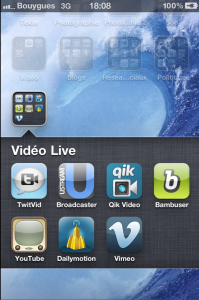 Our cellphones are not only phones anymore, they’re like a small computer that can be used for work. That’s why most journalists are now equipped with one. This way, they are always connected to the Internet and they can at any moment, search for latest news.
Our cellphones are not only phones anymore, they’re like a small computer that can be used for work. That’s why most journalists are now equipped with one. This way, they are always connected to the Internet and they can at any moment, search for latest news.
But above, smartphones can be used as tools. They are recorders and cameras, that can replace proper material for some occasions. Journalists should be multitasks and this devices make it easier. No need to be an expert in video or photography, applications on smartphones are within the reach of everyone.
In addition to the camera included on the phone – that are more performant every day – some applications exist that can be really useful for journalists. This is particularly the case for video editing apps, used by journalists to work on their reports, directly from their touchscreans. For the Iphone, different applications are available, like Splice and iMovie.
And once the video is edited, we can share it with Qik for exemple. A free application from the same editor as Skype, that can also be used to cover live events with its streaming function.
To learn more about those applications and others, and find links to download them, you can go here and here for even more details
There are plenty of mobile applications that are useful for journalists. The Knight Center of Journalism in the America’s blog of the University of Texas at Austin gives you a selection of five apps that every journalist should have.
We know that journalism is constantly changing and faced with new revolutions. And this mobile technology is one for the media.
It’s changing the way to work and the organisation of the redactions. With mobile devices, the journalism landscape is not the same anymore and for field journalists, smartphones have a prominent place in their work
Do we publish news on a phone application the same way as on a newspaper ?
Definitely not. People don’t read news on smartphones like on newspapers or even news sites. That is why medias have to create mobiles versions of their content that can be read with cellphones.
And how to do that ? Sentences and paragraphs should be shorter. Users can consult their news applications at any time but they don’t dedicate as much time as to newspapers. Moreover, it can be difficult to focus on a long text if it’s on a small screen. So journalists have to be able to reveal facts in a short way.
Headlines and subheads are important as well, they need to be really good worked to attract the attention of readers. This is true for newspapers too, but it became even more with the Internet, where information is overloaded.
We can also give a brief summary of the story, that users can read quickly on their phones. The idea here, is to bait people and to push them to read more about an information on an other support, that allow journalists to write a more detailed article, like newspapers or even websites.
An other important issue are videos and photos, they should illustrate the article and published along with the text, because it facilitates the reading. Likewise, they should be put on top of the topic to be easily accessible by mobile viewers.
Smartphones are giving a new life to citizen journalism
The distinct border between who consumes news and who produces it, is gradually becoming thinner. I’m not saying that journalism doesn’t exist anymore because anyone could do it, but that anyone can transmit information and facts. News consumers are often news producers as well. Imagine that you are witness of an unannounced protest or something like that, you’ll probably take photos and put them on the Internet. Thus, you can be considered as a news producer or a citizen journalist.
Online citizen journalism took his first steps with the transition to web 2.0 and with mobile devices, it became easier then ever. Smartphones allow you to take photos, videos and directly post them through the net. It’s fast, easy and free. Moreover, it can usually be seen by a lot of people and even become viral.
Most of the time, people post this kind of news and their own reporting, from their cellphones directly to social networks, like Facebook and Twitter. These platforms are often used for these purposes because they’re so accessible with smartphones applications. No need for much writing, a few words and a photo are enough to transmit a news. Then, people post status updates, notes, photos and videos from events regularly and often before mainstream media.
Therefore, this kind of news can be really useful for journalists. That way a journalist can be everywhere. If he finds something interesting that has been posted by someone in Twitter, he can include it in his own publication. So it can be a new tool for journalists to find information.

